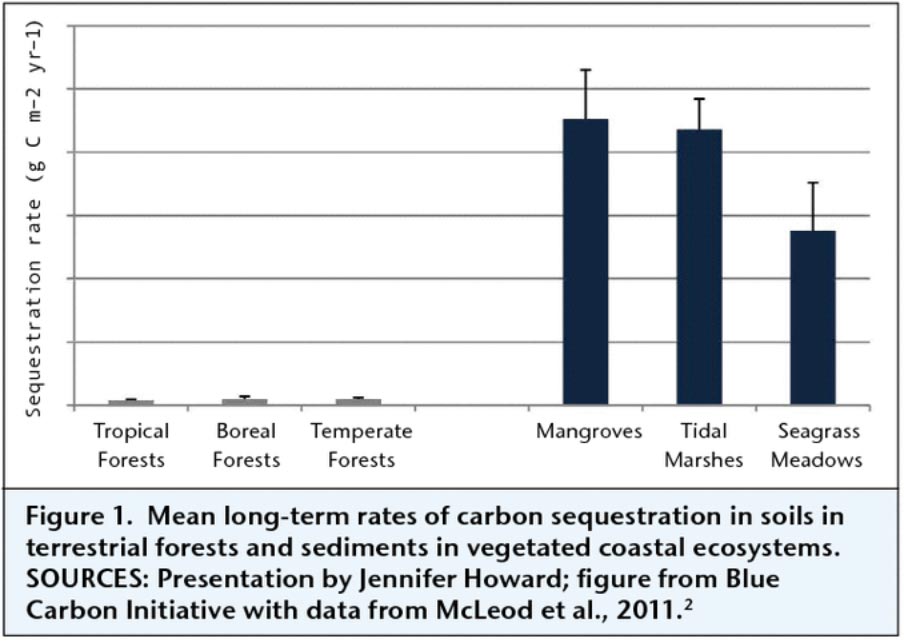Seagrass and kelp provide a possible mitigation strategy for the looming issue of anthropogenic climate change. They have proven to be an extremely effective measure at quickly capturing carbon dioxide from the atmosphere, which can help to slow climate change and the greenhouse effect. Coastal vegetation around the globe has been estimated to sequester about 866 Teragrams (Tg) of carbon per year through export to the deep sea and sediments. Kelp alone sequesters approximately 173 Tg of carbon, equivalent to over 190 million tons, per year within the ocean floor. This equates to 27 million elephants worth of carbon sequestered.1
This “blue carbon” sequestration transforms dissolved carbon dioxide into vegetative biomass. This provides the necessary organic compounds required for primary production, making seagrass a food source for sea turtles, manatees, and migratory birds. The loss of this keystone species would damage local ecosystems, harming the organisms that rely on seagrass meadows. Additionally, the destruction of seagrasses would have a significant economic impact, valued at a loss of US $19,002 per hectare per year.2
